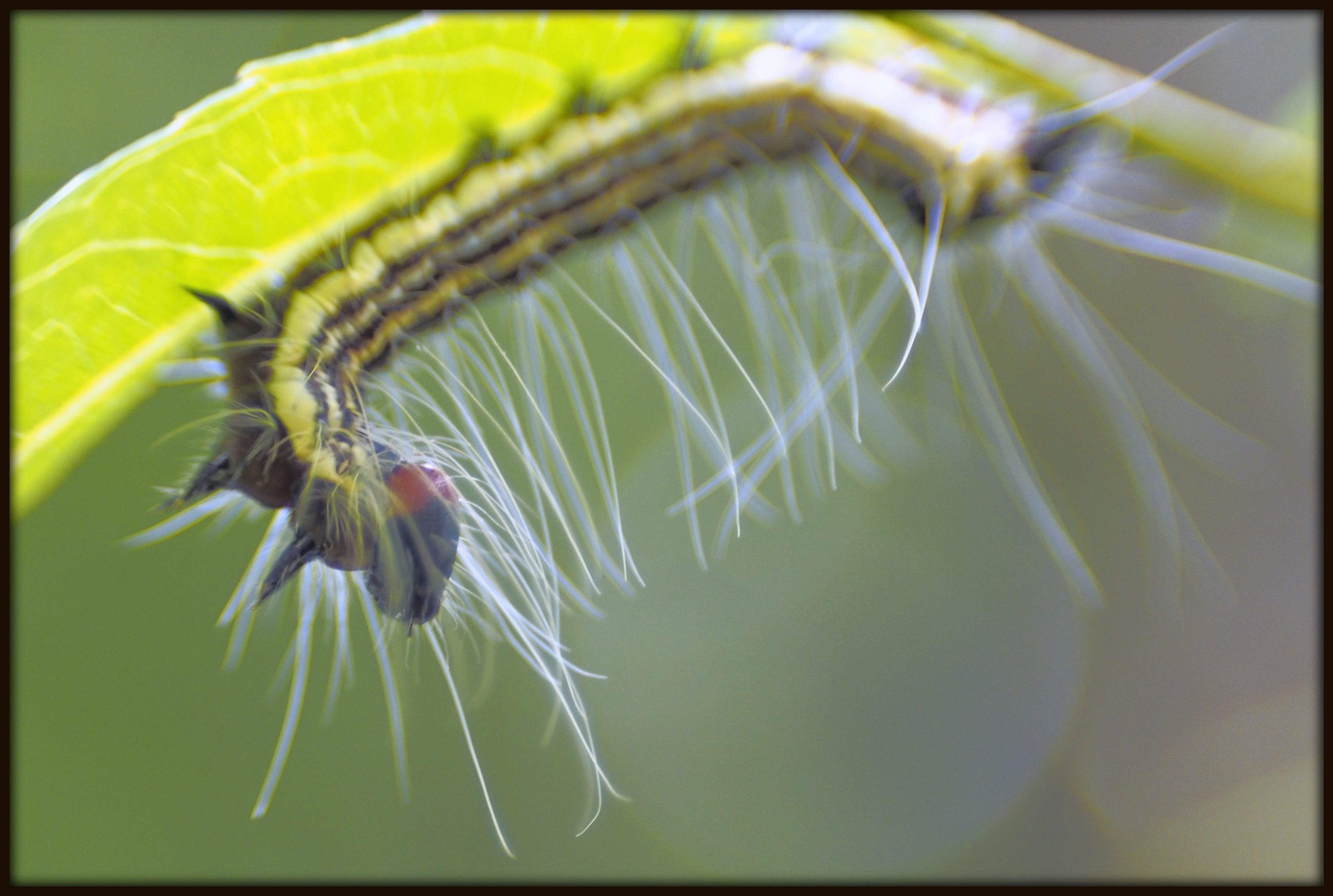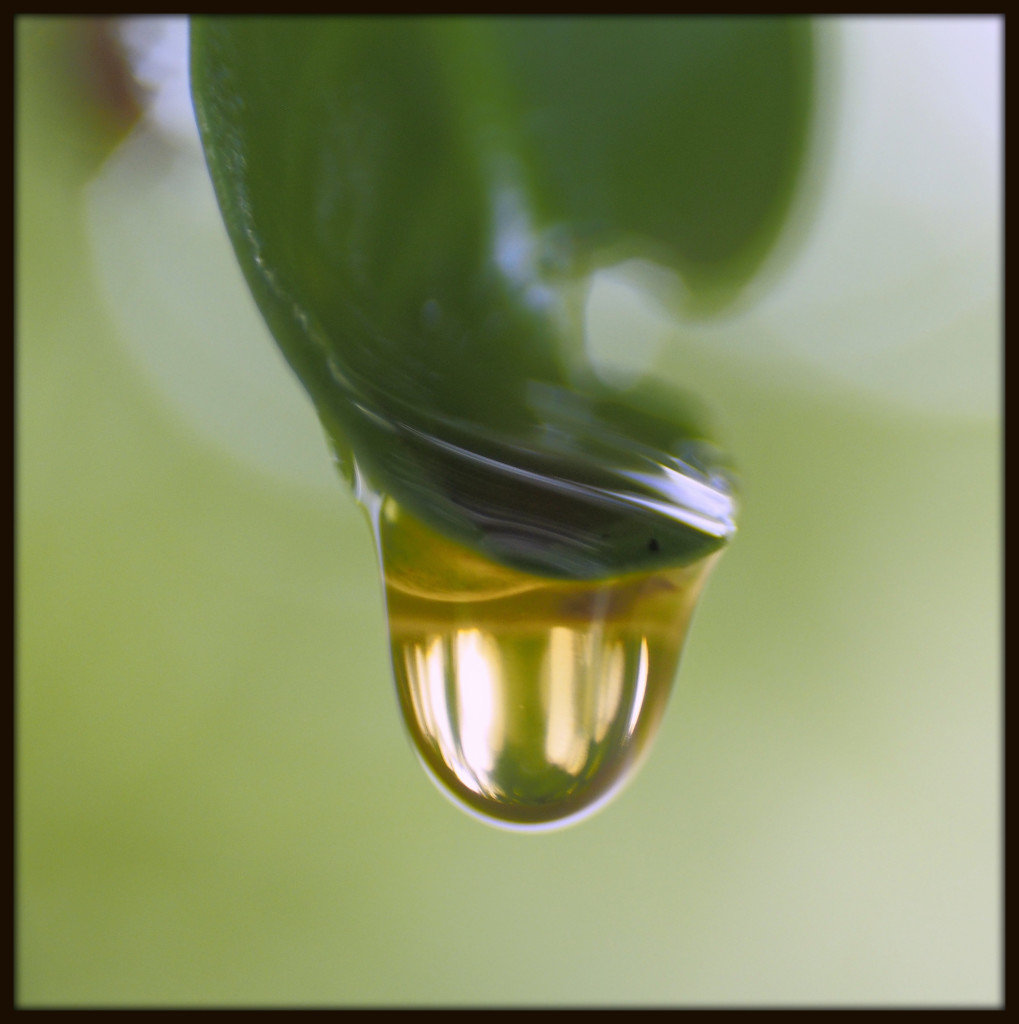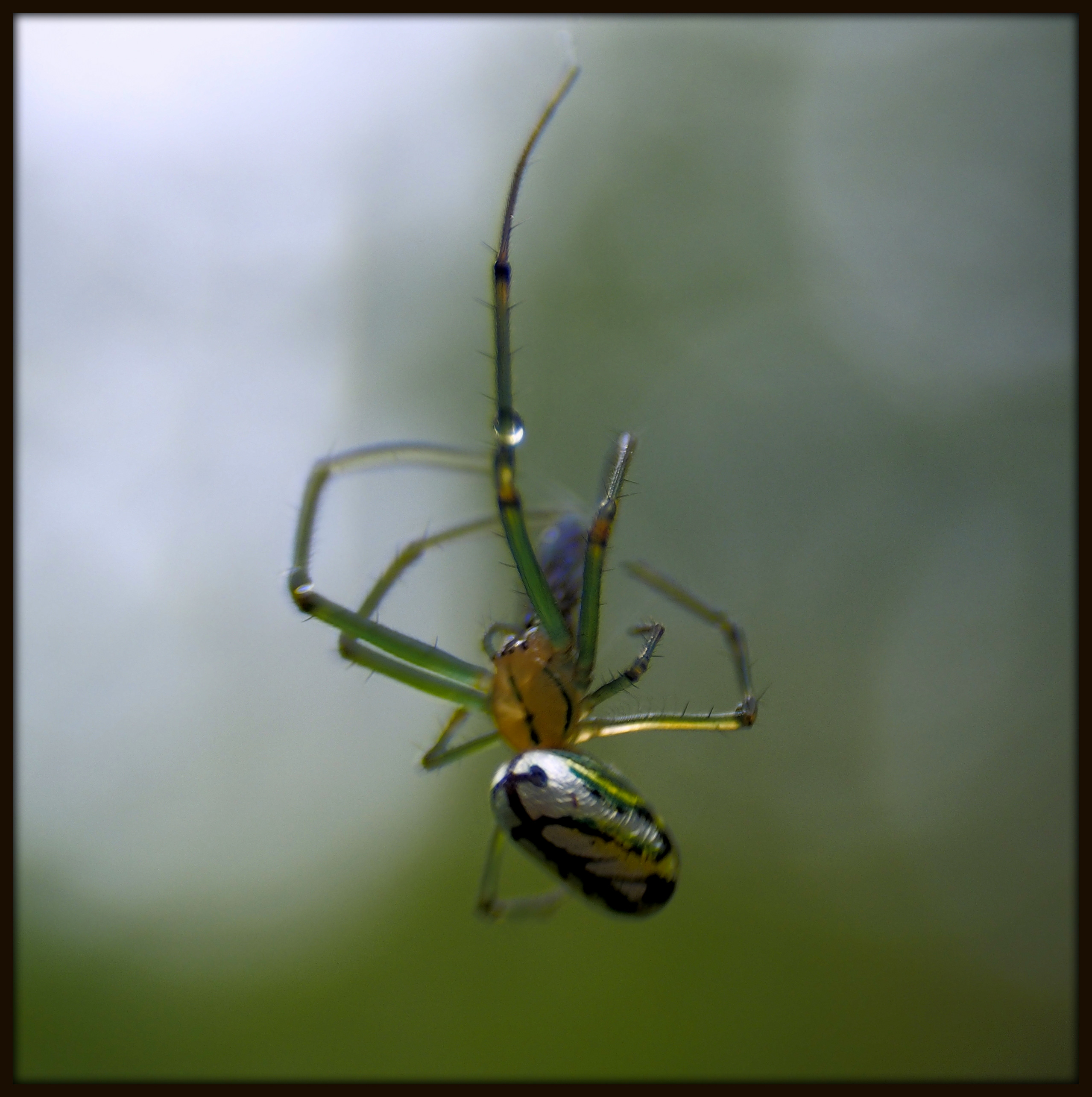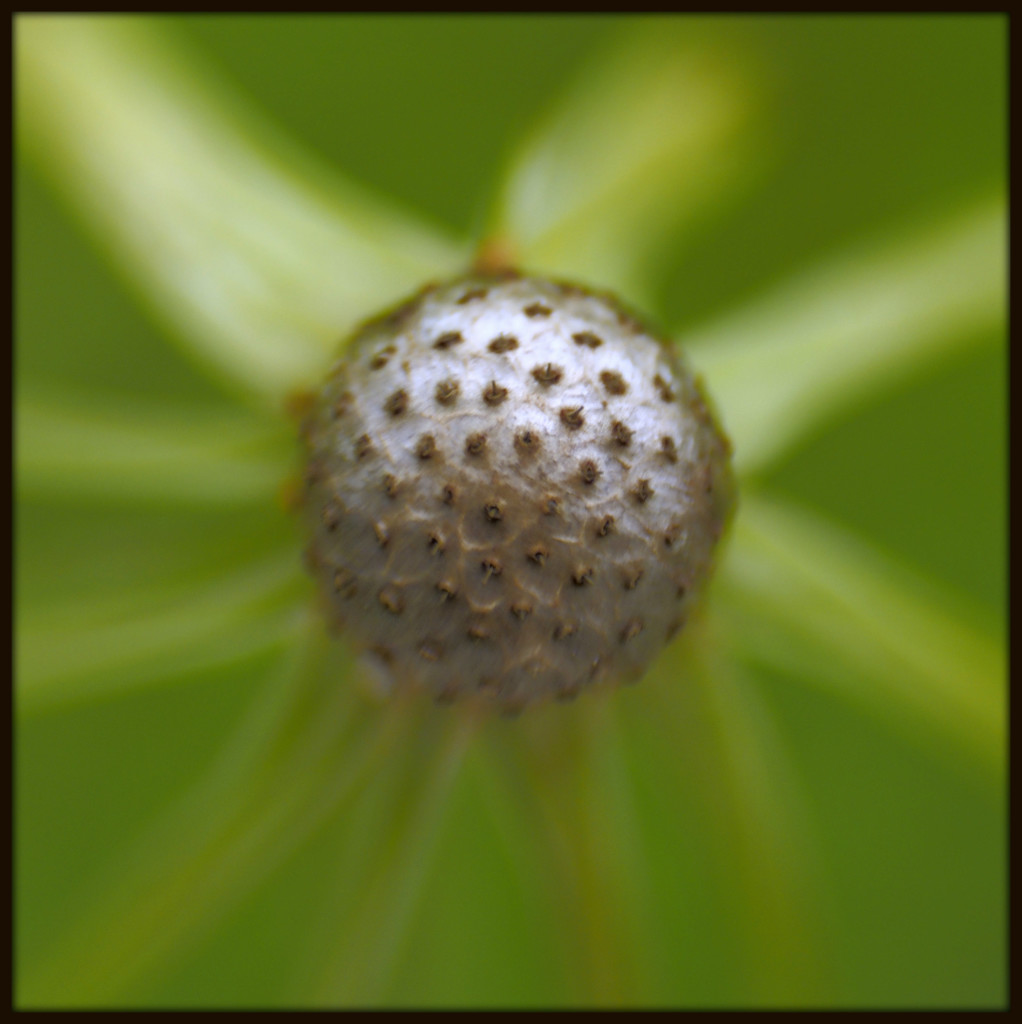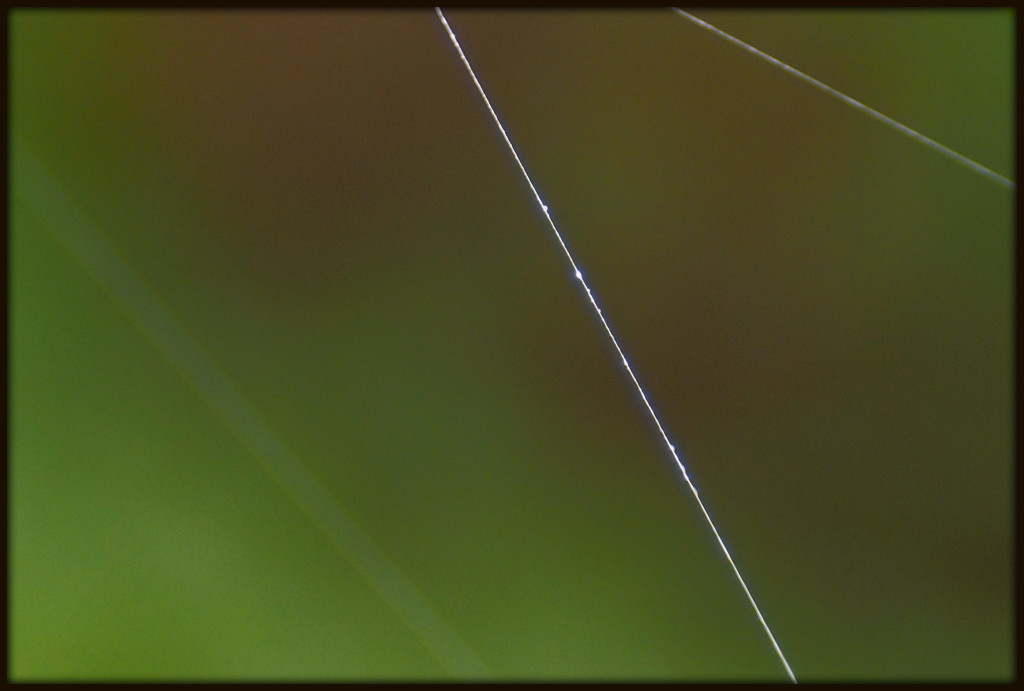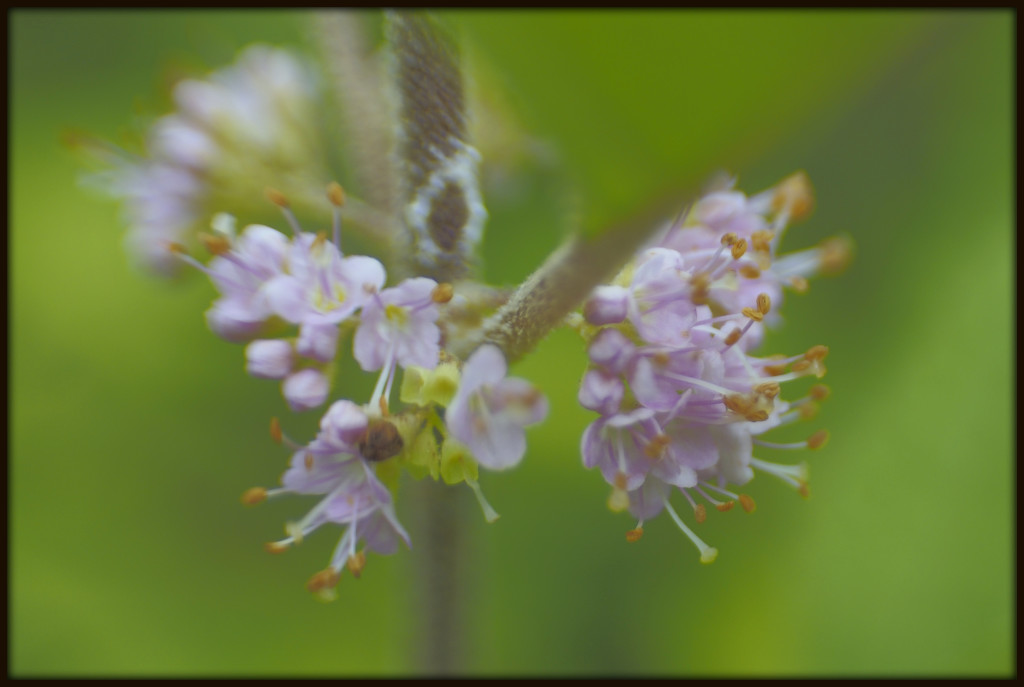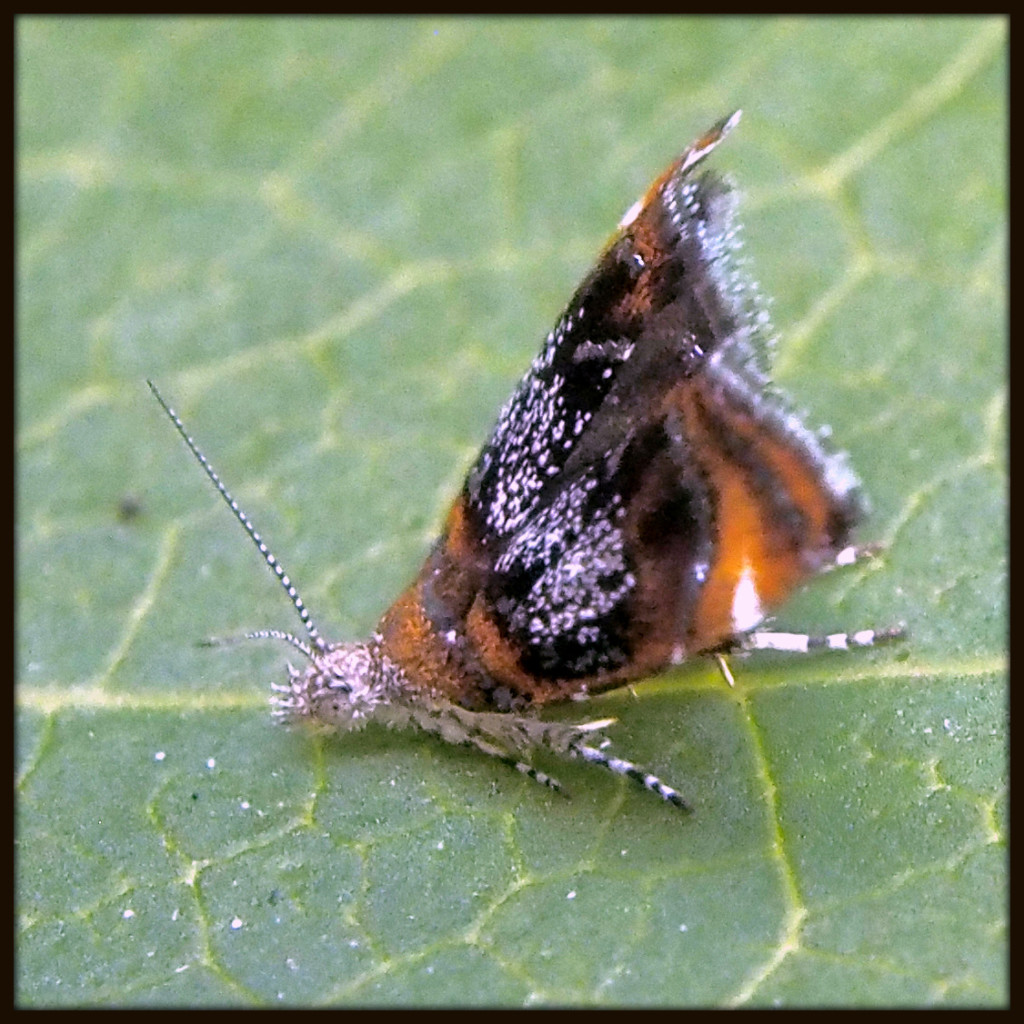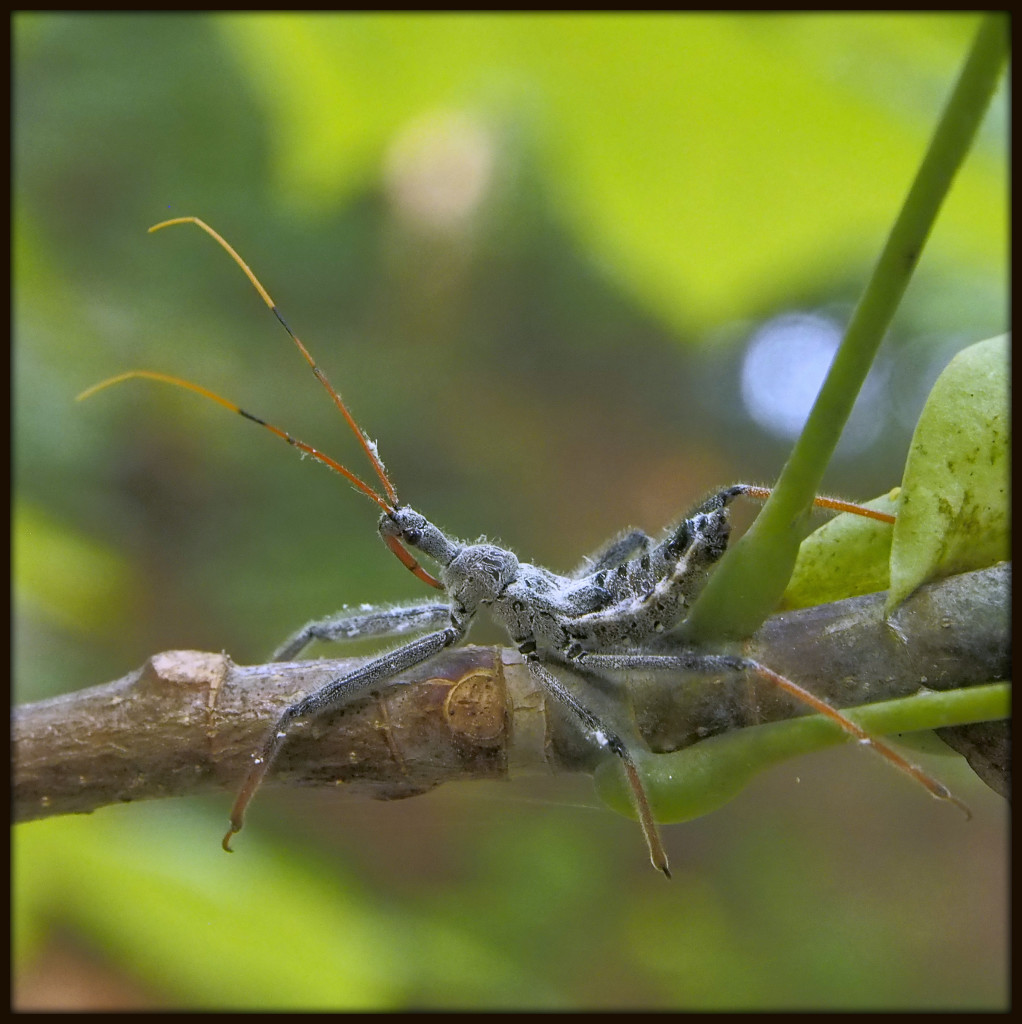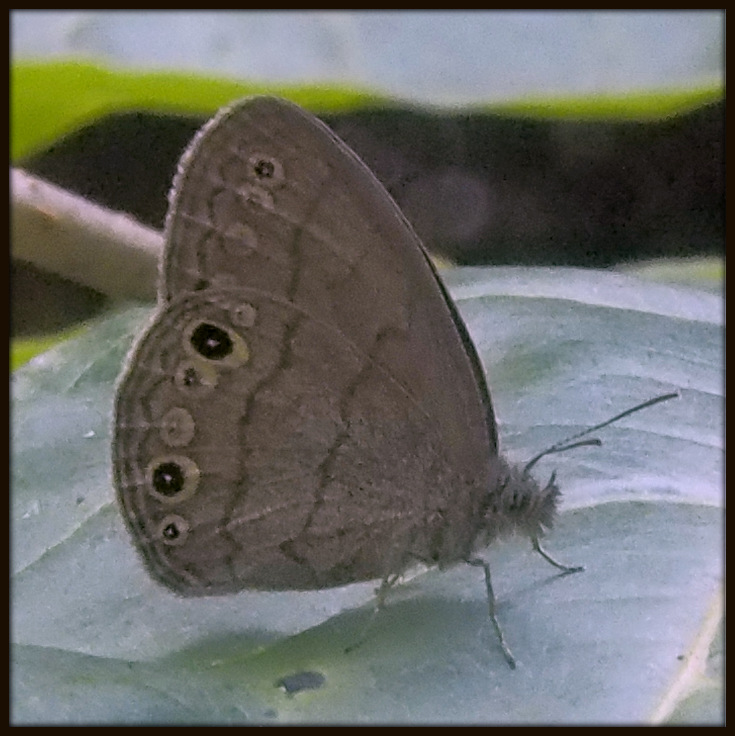This afternoon, I ventured to Piney Woods Church Road with my Lensbaby Sweet 35 Optic for the first time. The Sweet 35 produces a “sweet spot” of focus (one that, through tilting the optic, can be shifted to any part of the frame). A well-built manual focus lens, it has a learning curve (particularly when paired with an extension ring, as I did, for macro images). It produces a lot of chromatic aberration — a “halo”, often of purple, surrounding darker objects against a bright background. At the very end of my walk, in my own yard, I finally took an image that, to me, embodies the possibilities of Lensbaby for color photography — a lovely shot of some beautyberry in bloom. Meanwhile, here is a caterpillar who I saw on the underside of a pin cherry leaf. It is almost certainly a Radcliffe’s Dagger Moth Caterpillar (Acronicta radcliffei). I took this photo with my camera pointed upward, using my tilting screen on the camera to bring the caterpillar into focus. For some reason, this photo reminds me of the hookah-smoking caterpillar from Alice in Wonderland.
